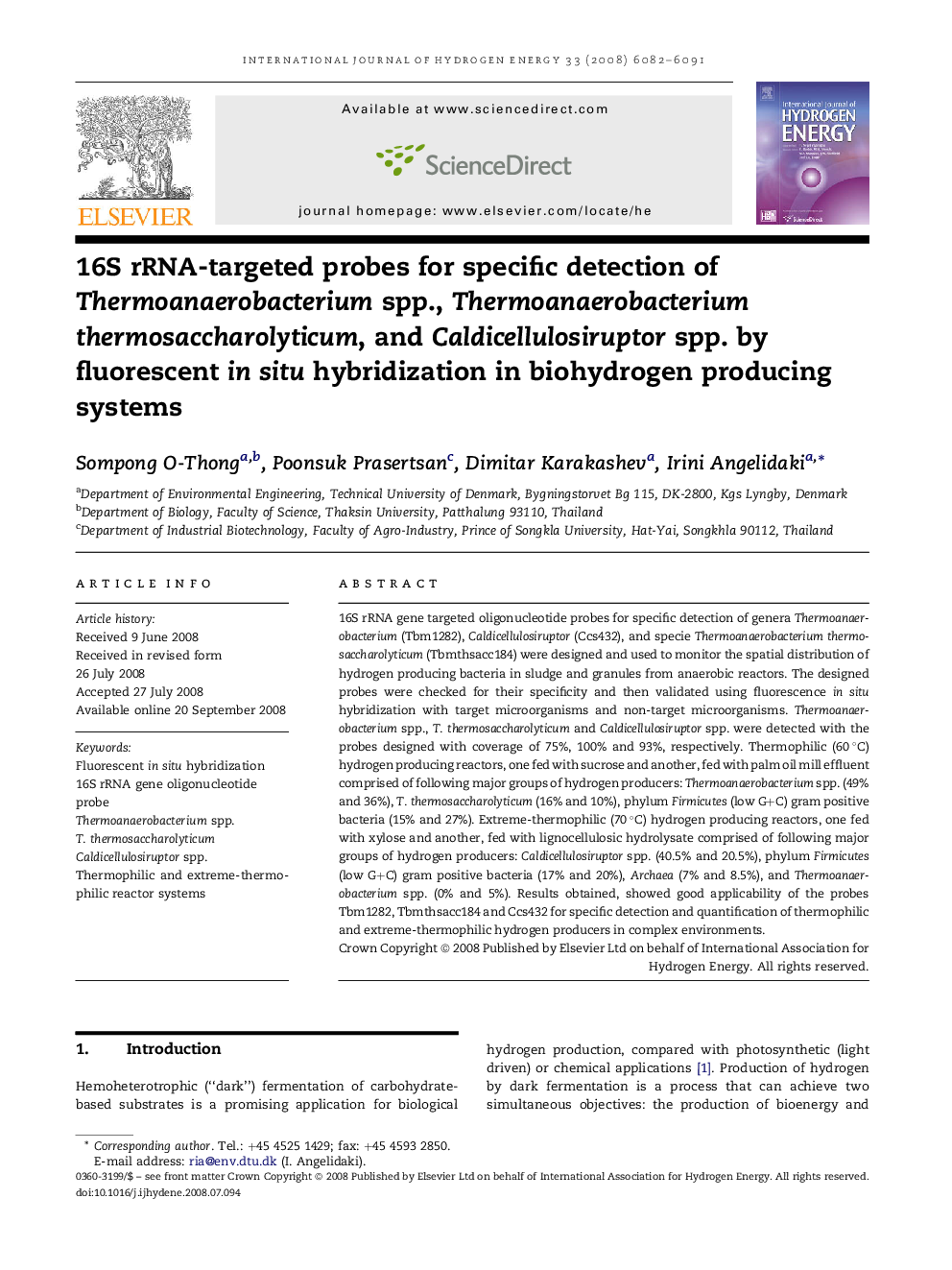| Article ID | Journal | Published Year | Pages | File Type |
|---|---|---|---|---|
| 1283607 | International Journal of Hydrogen Energy | 2008 | 10 Pages |
16S rRNA gene targeted oligonucleotide probes for specific detection of genera Thermoanaerobacterium (Tbm1282), Caldicellulosiruptor (Ccs432), and specie Thermoanaerobacterium thermosaccharolyticum (Tbmthsacc184) were designed and used to monitor the spatial distribution of hydrogen producing bacteria in sludge and granules from anaerobic reactors. The designed probes were checked for their specificity and then validated using fluorescence in situ hybridization with target microorganisms and non-target microorganisms. Thermoanaerobacterium spp., T. thermosaccharolyticum and Caldicellulosiruptor spp. were detected with the probes designed with coverage of 75%, 100% and 93%, respectively. Thermophilic (60 °C) hydrogen producing reactors, one fed with sucrose and another, fed with palm oil mill effluent comprised of following major groups of hydrogen producers: Thermoanaerobacterium spp. (49% and 36%), T. thermosaccharolyticum (16% and 10%), phylum Firmicutes (low G+C) gram positive bacteria (15% and 27%). Extreme-thermophilic (70 °C) hydrogen producing reactors, one fed with xylose and another, fed with lignocellulosic hydrolysate comprised of following major groups of hydrogen producers: Caldicellulosiruptor spp. (40.5% and 20.5%), phylum Firmicutes (low G+C) gram positive bacteria (17% and 20%), Archaea (7% and 8.5%), and Thermoanaerobacterium spp. (0% and 5%). Results obtained, showed good applicability of the probes Tbm1282, Tbmthsacc184 and Ccs432 for specific detection and quantification of thermophilic and extreme-thermophilic hydrogen producers in complex environments.
